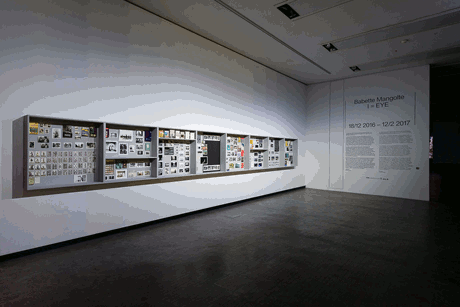Solo Show at KUNSTHALLE WIEN, Austria
Curator Luca Lo Pinto
I = Eye reflects on Babette Mangolte’s preoccupation with the perception of performance, her investigations into medium-specificity, and the transcription of the self on and off stage, inscribed by and for the camera. The exhibition covers a wide range of works stemming from early cinematic and experimental films to her documentary photography of the theater, dance, and performance of the avant-garde New York scene in the 1970s. In addition, two remastered historical site-specific installations feature, as well as recent projects.
Installation Views Slide Show photo @ 2016 Jorit Aust

The exhibition, influenced by Mangolte’s crucial interest in the staging of the subjective camera, is conceived with an accordingly experimental approach: as a score using time and space as a medium. The sequence of films and intermittent intervals of sound (either excerpts of works or voiceovers) plunged in darkness and projected on four separate screens takes center-stage in the mise-en-scène of I = Eye. It allows for a cinematic experience and choreography of perception. The score is scripted to fit the exact opening hours of the institution thus creating an immersive choreography both of the works and their beholders. It also invites a pronounced engagement with the format of an exhibition.
The 13 films screened daily, which constitute the overall score, provide broad insight into her experimental filmmaking practice. Spanning concepts on portraiture, performance and space, Mangolte’s films offer a visual experience that breaks with the gaze and thwarts the identification with the actors known from classical cinema. A key example for this practice is one of her earliest films, La Camera: Je, which acts out the photographer’s point of view on the people she films and the city in which she lives. The film uses a “subjective camera” in order to provide an active sense of the relation between the person behind the camera and the subject, the photographer and the photographed.
Publication: a publication with selected texts by the artist will accompany the exhibition, approx. 240 pages, Sternberg Press, Berlin
|